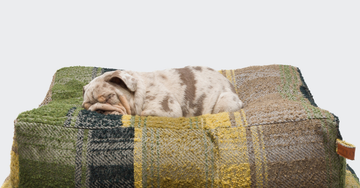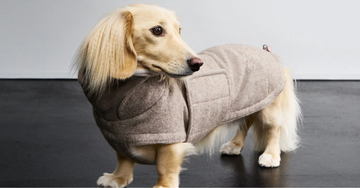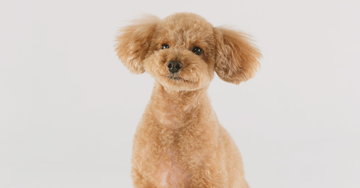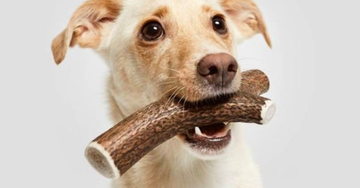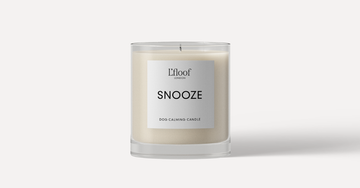A dog that is constantly on high gear is not necessarily a happy dog – perhaps it is understimulated or stimulated incorrectly . Your dog needs both activity and rest, and if it is having difficulty finding peace, it is important to understand its needs so that you can help it along the way.
The best activity is something your dog enjoys doing – something they naturally want to do. Dogs are designed to run, sniff, dig, hunt and search , and it is in these activities that they find joy and balance.
If your dog has difficulty settling down, look at its daily activity – perhaps it needs more of the right kind.
A well-stimulated dog is a balanced dog.
Mental activation for dogs
Most dogs love to solve tasks that challenge both their brains and their noses. Mental stimulation isn’t just about using toys or tools – it’s just as much a collaboration between you and your dog. When you train or play together, it not only gives your dog a mental challenge, but it also strengthens your bond.
There are many smart tools that make it easy to keep your dog entertained, but remember that the best activity is often the one you do together.
Here are some products that can be an extra help to stimulate your dog mentally:
Soft Activity Ball with space for treats
Silicone activity ball for treats
Enrichment toys for treats, food and snacks
See all activity toys for dogs
Snuff game
Hide treats or food and let your dog use his nose to track down the reward. Sniffing is a natural and stimulating activity that both calms and tires your dog. You can hide treats around the home, in the garden, or use a sniff mat or activity toy for a more focused challenge.
If you want to teach your dog to search on command, you can start simply:
- Show your dog that you are throwing a reward while he waits.
- Release your dog and say “search” so that he associates the word with the task.
- Make it gradually more difficult by hiding treats in more hidden places.
Problem solving
Your dog is naturally curious and a skilled problem solver. Problem solving stimulates their mental capacity and boosts their self-confidence.
Problem solving can be simple everyday situations – for example, if your dog goes the “wrong” way around a lamppost. Instead of helping him right away, you can patiently give him time to find the right way on his own. This gives your dog the opportunity to think about and learn from the situation.
Another fun and simple exercise is “tat” training , where your dog has to touch your palm to get a reward. This creates a positive learning experience and strengthens cooperation between you.
Activity balls are also a great way to challenge your dog's problem-solving skills. Treats or dry food are hidden inside the ball, and your dog has to figure out how to get them out.
See all activity balls
Physical activity for dogs
Physical activity is essential for your dog's well-being, but not all dogs need the same amount or type of exercise. Exercise should be tailored to your dog's breed, age, health, and energy level to ensure they get the exact amount of exercise that promotes balance and well-being.
Many dogs, especially working dogs and energetic breeds, need more than just a daily walk. If your dog is not physically stimulated, it can lead to restlessness, stress and unwanted behavior. Here are a number of activities that can help your dog burn off energy in a healthy and fun way.
More than just a walk – remember the variety
Walks are a regular part of everyday life, but you can easily make them more exciting for your dog: change the route, give your dog time to sniff and use the terrain along the way – for example, let your dog jump on large rocks and tree trunks. Go to the forest or the beach and let your dog have more freedom with a long leash.
See track lines here (up to 15 meters)
Physical play
Playing games that involve your dog using their muscles is a great way to stimulate both their body and mind. Activities like fetch and tug-of-war not only provide physical exercise, but can also strengthen the bond between you and your dog. By combining these games with impulse control, your dog learns to control his excitement and wait for your cues – a valuable exercise that can improve obedience and self-control in everyday life. Remember to adapt the game to your dog’s size, age and energy level so that he gets the most out of the activity without overexerting himself.
Race-specific activation
Breed-specific activation is about choosing an activity that fits the instincts and tasks your dog breed was originally bred to perform.
For example , cocker spaniels, springer spaniels and other hunting dogs love to use their noses to track down scents. Golden retrievers and Labradors thrive on fetch games where they can retrieve a ball or a dummy. Terriers often have a natural joy in digging, while greyhounds are built to run and enjoy fast sprints. Border collies are highly intelligent and often thrive on agility or some other form of mix between mental and physical activity.
If you are unsure about which type of activity is best for your dog, read up on the breed's background and working characteristics - you may find an activity that matches your dog's natural talent.
Remember the balance between activity and rest
While physical activity is important, your dog also needs time to relax. Some dogs become overstimulated if they are constantly in motion. Remember to combine physical exercise with mental activity and quiet breaks to give your dog a balanced daily routine .

